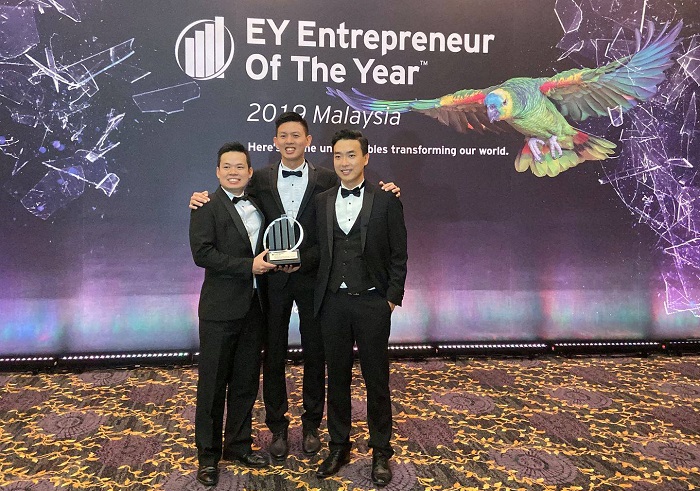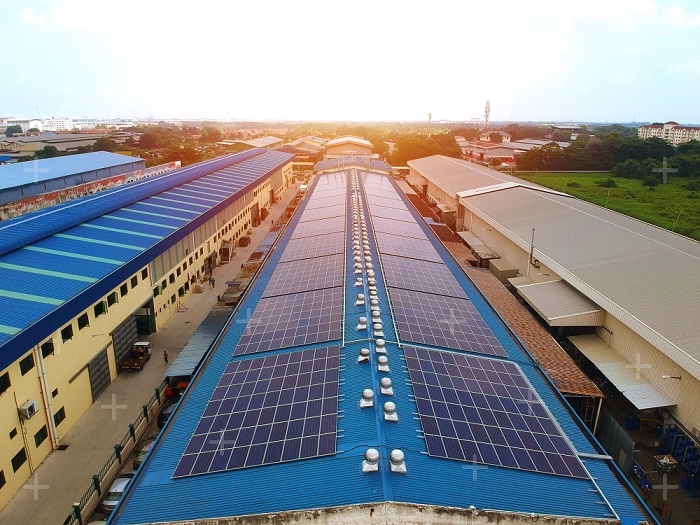Clean energy firm, Plus Solar, banks on software to get to next level
By Kiran Kaur Sidhu November 23, 2020
- Led by engineering student who didn’t really like engineering
- Building IoT, AI solutions to solve remaining energy pain points

From using solar energy to power a car’s cooling system in engineering school 13 years ago to Malaysian based Plus Solar Sdn Bhd hitting a 200% revenue jump in 2019, chief executive officer and cofounder Ko Chuan Zen has a lot to be proud of. The company was founded by Ko, Ryan Oh, the chief technology officer, and Poh Tyng Huei, the chief operating officer in 2011.
Ko and Ryan are were high school mates while Poh and Ko became friends when studying electrical engineering at Multimedia University, in Cyberjaya, Malaysia which incidentally was when Ko’s love affair with renewable energy was sparked. “I was an engineering student that didn’t really like engineering. But during my final year project, I looked into how I can use solar energy to lower the temperature of a car parked in the sun. When I connected the device and saw how it worked, I was amazed,” he recalls.
Following an eye-opening internship in Taiwan, Ko realised Malaysia lagged behind in the field and continued to work and learn about renewable and clean energy for the next four years before starting Plus Solar. “Poh was in banking then and one of his clients was keen to invest in solar energy. We were introduced and after chatting for some time, the three of us, Ryan, Poh and I, decided to start something together.”
Today, the company offers solar photovoltaic solutions with a wide footprint of 150 commercial and industrial buildings across Malaysia and six solar farm projects to date. With the system in place, clients are able to enjoy 25% energy cost savings on average. “We are a system integrator. We design the whole system and assemble it as a solution for the client,” explains Ko.
Plus Solar has long surpassed its initial challenges of gaining market trust and business traction. By the end of its last financial year ending March 2020, the company achieved the US$36 million (RM150 million) revenue mark, 200% higher from the US$ 15 million (MYR 64 million) in financial year end 2019.
Ko attributes this to the spike in demand for solar power in commercial and industrial buildings due to the reinvestment tax allowance which reduces the payback period from seven to three years. Additionally, the company also carried out a couple of solar farm projects in the past year which contributed to 50% of its revenue growth.
But despite the increased popularity of solar power, there remains a lot to be desired in terms of digitalisation and device efficiency in the field. “A lot of mechanical and electrical design in buildings are very outdated and analogue. Simply switching the energy source from electricity to solar power can only solve 30% to 40% of a building’s energy issues,” says Ko.
Digitalisation through smart energy system
Keen to further resolve their clients’ energy woes, Plus Solar have tried European hardware devices to lower down voltage mechanically. “However, we find the results not very significant,” he explains, adding that these are older inventions not catered to latest demand.
But innovation through internet of things (IoT) and machine learning is the way forward, Ko believes. “In 2018, we realised there’s a lot of digitalisation in other industries but [little change] in the energy industry. That was when we decided to introduce our own software solution to solve the remaining energy pain points through IoT and AI solutions.”
This required the core engineering team to be beefed up to 6 hardware engineers and 4 software engineers. All of them know various programming languages, with Javascript, C++ and Python the key languages
“Because we were doing smart energy platforms, we needed to connect all engineering knowledge from hardware to software, under one roof. Our engineers needed to know building energy efficiency knowledge and solar energy generation knowledge as well,” explains Ko.
While acknowledging the field of solar energy is slow to innovate, Plus Solar believes its smart energy management system, SOURCE, is a step forward in further efficiency and cost savings
SOURCE, uses artificial intelligence (AI) and IoT to translate energy monitoring for actionable business insights. The smart energy performance management system leverages on IoT meters, sensors, controllers and AI to manage a building’s energy demand and consumption while maximising savings.
An energy management platform makes business sense for office buildings, shopping centres and manufacturing plants where 40% of the global energy use is dedicated towards heating, ventilation and air conditioning, or HVAC. When heavily populated, zones will have a higher cooling load and a lower one when human traffic is sparse.
The result, by understanding established patterns over time, it can predict and adjust chill air outputs to suit loads before they happen. It can enable businesses to get a bird’s eye view of a building’s energy consumption, balancing load of various industrial machines - to ensure optimum usage of energy.
“Each type of building consumes energy very differently and the method that we use for each building differs as well. We design our IoT devices from scratch by programming chipsets in the market. We assemble these microchips in sensors and IoT devices and deploy them in different business segments,” explains Ryan.

Some of Plus Solar’s clients such as Tan Kian Huat fishery, Shell Mark Maju, Asadi and Spritzer have reported a 20%-25% reduction in HVAC since adopting the energy management system, as it helped them to monitor, control and maximise their energy savings and reduce operational costs.
While smart energy devices are not new in the market, Plus Solar’s competitive edge lies in its track record, end-to-end integration and core competency in solar power. “We drill down into each individual building and its problems in detail that actually can’t be resolved by existing, off-the-shelf solutions. Secondly, some of these brands are locally distributed and overseas R&D so cost-wise it may not be very effective.”
Many energy brands do come with propriety software solutions. However, Ko highlights, that the software is often just a supplementary tool to support their hardware mainly. “For us, our IoT sensors comes as a standalone. We don’t sell hardware with it. We are a third party open platform able to integrate to most hardware in the market,” he asserts.


